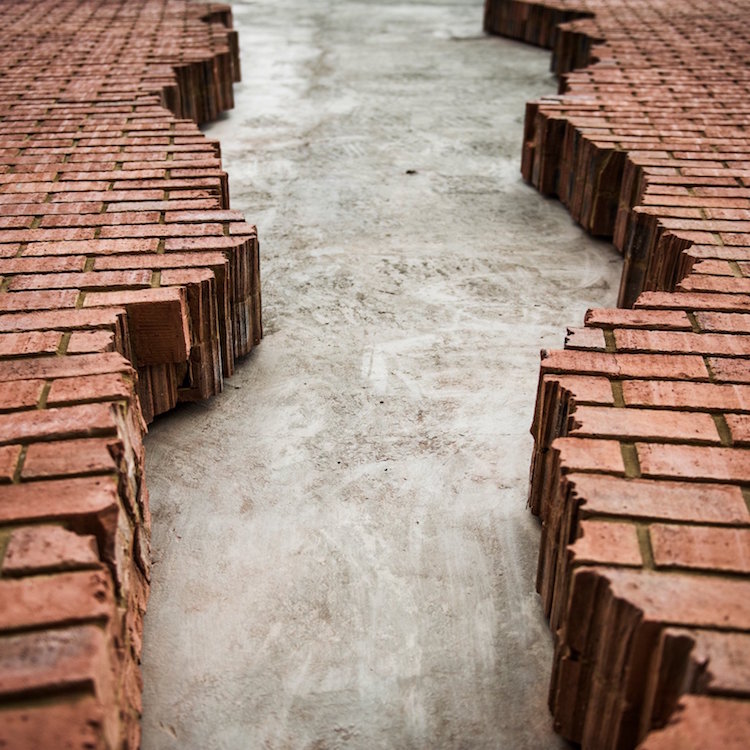LONDON—One could assume the scar across this building is the result of shoddy construction, but alas, it’s actually British artist Alex Chinneck’s newest public art installation, Six pins and half a dozen needles, a permanent installation on the site of Assembly London – a campus of offices, retail units and restaurants situated in Hammersmith.
The facade, resembling a ripped page, is comprised of 4,000 unique bricks, which is nod to the building’s previous occupant, Dezeen writes.
The area had been home to a publisher for two decades, and Chinneck has referenced its history in his piece.
The sculpture has been designed to appear as if part of the building’s existing red-brick facade has cracked in two. Chinneck spent months scanning torn sheets of paper to digitally design the split, which is intended to resemble a page ripped from a book.
The two sides of the rip lean away from the building, as if about to fall down; an effect created using two layers of brick. Chinneck, whose previous works include a slippery facade and a melty, drippy house, tells Dezeen he tries to create the unexpected.
“I try to introduce sculptural interventions in unexpected contexts, heightening a sense of discovery when you encounter them. With this in mind, the archetypal nature of the building’s upper elevation makes it a perfect platform for surprise.”
Chinneck adds he strived to balance the unexpected and the existing architecture, “to restrain it from becoming contextually overpowering by making it visually harmonious with the situation it occupies.”
Dezeen explains the construction process:
The artist collaborated with a diverse team over the course of 14 months to complete the piece, working with structural engineers, brick makers, water cutters, steel fabricators, site welders, crane operators and tilers.
The sculpture is placed on a steel framework that’s bolted and welded to the building, and its rip is made from 1,000 separate stainless steel components and hundreds of unique bricks – each individually cut by hand and water.
Do you love or loathe this brick work from the worlds of contemporary ceramic art and contemporary ceramics? Let us know what you think.












Add your valued opinion to this post.